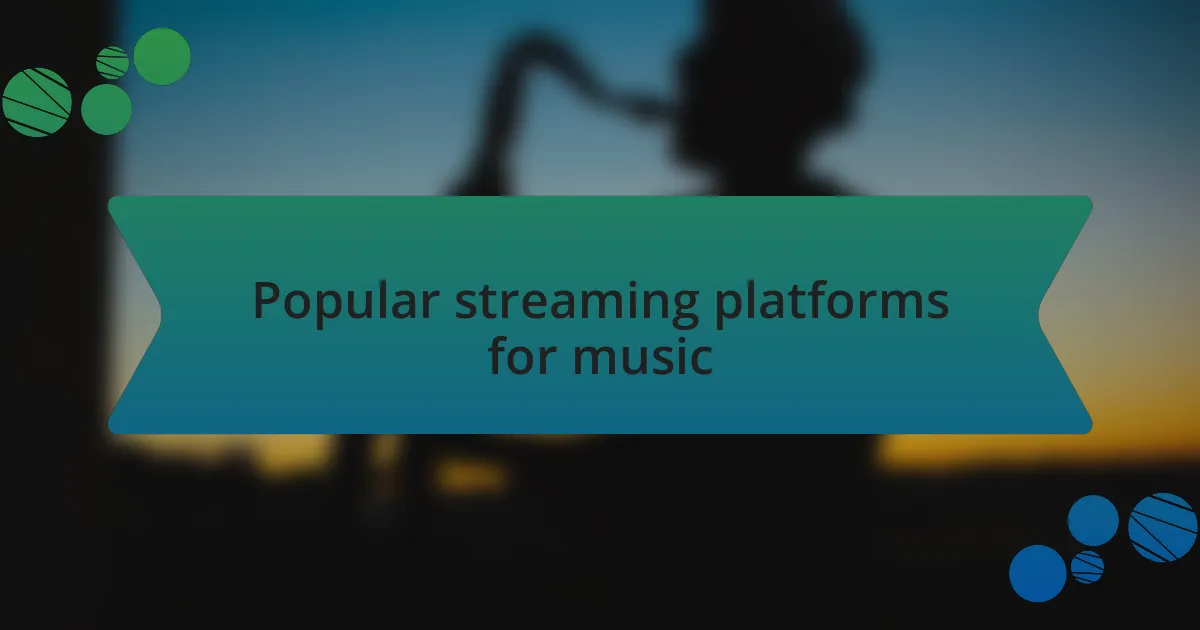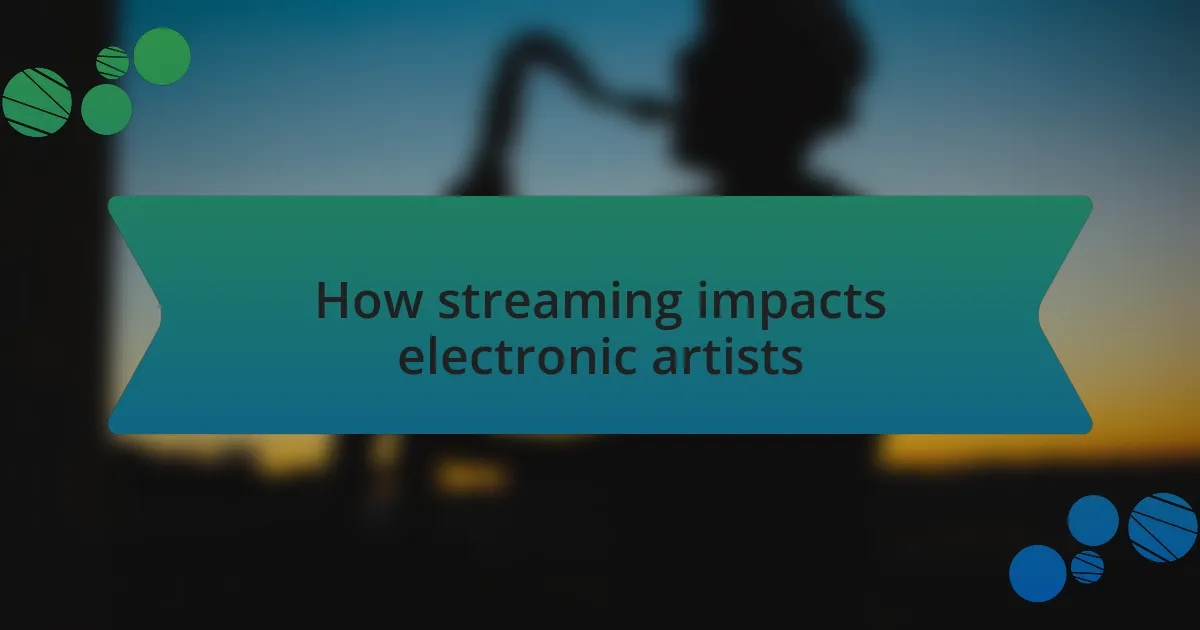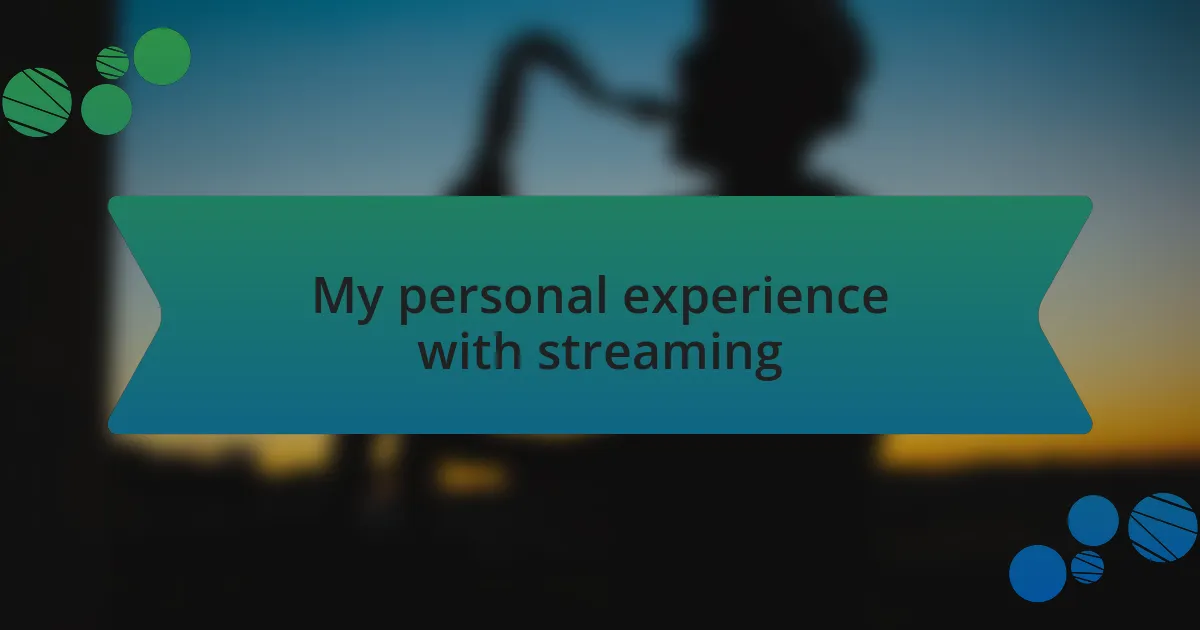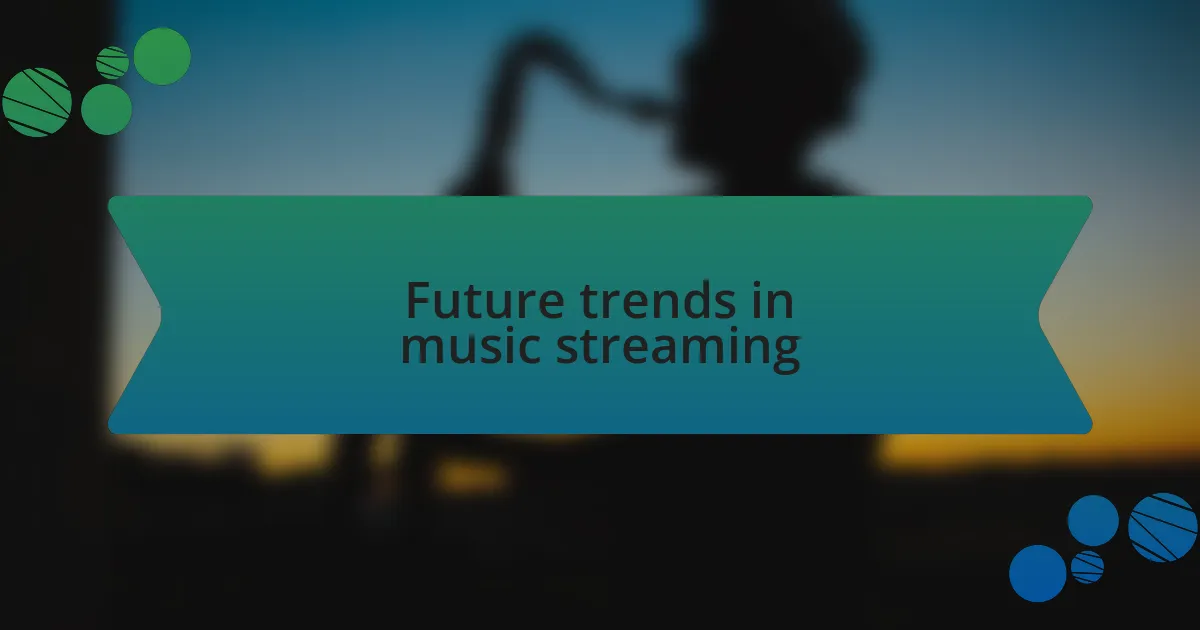Key takeaways:
- Music streaming platforms have transformed listening habits, emphasizing exploration and community connections with artists and fans.
- Electronic music labels are vital in promoting unique artists, influencing production quality, and providing essential support for emerging musicians.
- Streaming offers wider exposure for electronic artists but poses challenges, such as low royalties and diminished exclusivity of live performances.
- Future trends include immersive experiences like virtual reality concerts and enhanced community engagement, which also raise concerns about fair artist compensation.

Overview of music streaming platforms
Music streaming platforms have revolutionized the way we consume music today. I remember the excitement when I first signed up for a streaming service; suddenly, I had access to millions of songs right at my fingertips. It’s fascinating how these platforms have shifted our listening habits from owning albums to simply enjoying whatever music we want in the moment.
These platforms offer curated playlists, algorithm-driven recommendations, and even exclusive releases, which can often feel like having a personal DJ. Have you ever found a hidden gem through one of their playlists? I have, and that moment of discovery can be pure magic. It’s that entire journey of exploration—finding new electronic tracks that resonate with you—that makes streaming so engaging.
It’s not just about ease of access; it’s also about the connection we build with music and artists. The ability to follow our favorite DJs and get alerts about new releases fosters a community feel, making music more than just a personal experience. In a world where we often feel isolated, isn’t it incredible how music can still connect us all?

Importance of electronic music labels
Electronic music labels play a crucial role in shaping the sound and identity of the genre. In my experience, discovering a new track from a small label often feels like uncovering a secret treasure. These labels serve as curators, promoting unique artists and sounds that might otherwise go unnoticed in the vast sea of music available online.
Additionally, electronic music labels provide essential support for artists, helping them navigate the complexities of the music industry. I remember when a budding DJ friend of mine signed with a label; not only did they receive promotional assistance, but they also benefited from networking opportunities that significantly boosted their career. This kind of backing is invaluable in a scene that thrives on collaboration and innovation.
Furthermore, labels contribute to the overall quality of music by influencing production standards and encouraging artistic experimentation. When I listen to tracks released by respected labels, I often notice a level of craftsmanship and creativity that stands out. Have you ever felt that thrill when you hear a well-produced track that just clicks? It’s that attention to detail, nurtured by dedicated labels, that elevates the entire electronic music experience.

Popular streaming platforms for music
When it comes to popular music streaming platforms, Spotify probably comes to mind first. The platform’s ability to create personalized playlists is impressive; I can’t count how many times I’ve stumbled onto a new electronic track that perfectly matched my mood, thanks to its algorithm. Have you noticed how it often feels like the app reads your mind?
Another major player is Apple Music, which offers an extensive library and high-quality sound options. I remember being drawn to their curated playlists that highlight emerging artists. It’s exciting to hear fresh sounds right as they’re gaining traction. It feels like being part of something bigger, a community of listeners uncovering talent together.
Then there’s SoundCloud, which is a goldmine for underground and independent artists. I often turn to SoundCloud when I want to explore innovative remixes or fresh tracks from lesser-known DJs. The platform’s emphasis on sharing and collaboration fosters creativity that can lead to remarkable discoveries. Have you ever found a track there that became your anthem? I sure have, and it’s exhilarating!

How streaming impacts electronic artists
The rise of streaming platforms has fundamentally transformed how electronic artists reach their audiences. I remember an independent DJ sharing how platforms like Spotify allowed him to connect with fans worldwide. It’s incredible to think that a song can travel from a small studio to countless listeners in just a few clicks, isn’t it?
However, while streaming can amplify exposure, it often comes at a cost. I’ve spoken to artists who express frustration over low streaming royalties, leaving them questioning whether it’s worth it. They’re pouring their hearts into tracks that gain popularity, yet the financial reward barely keeps up with their passion.
Moreover, the instant accessibility of electronic music through streaming can also dilute the sense of exclusivity that live performances once held. I love attending underground shows where the energy is palpable, but with so many tracks available online, do those live experiences still feel as special? Artists are now challenged to create memorable moments that resonate beyond the digital realm, ensuring their performances stand out in a crowd.

My personal experience with streaming
I remember the first time I created a playlist on a streaming service. It felt like curating my own radio show, mixing tracks that told a story. That ability to quickly share my musical tastes with friends expanded my social circle and opened up discussions about everything from sound design to vibe selection—it was exhilarating!
As I navigated through various platforms, I began to appreciate how algorithms tailored music recommendations to my listening habits. One day, while I was working, a track popped up that I had never heard before but instantly resonated with me. That serendipitous discovery felt like finding buried treasure, reinforcing my belief in the power of these platforms to introduce listeners to new genres and artists.
However, I’ve also found myself grappling with the sheer volume of music available. Sometimes it’s overwhelming, and I catch myself asking: Am I missing out on something amazing simply because there’s too much noise? Despite the convenience, I often long for someone to help guide my journey through the vast sea of sound, showcasing hidden gems instead of letting the algorithm take the lead.

Future trends in music streaming
As I look ahead, I can’t help but notice the rise of immersive experiences in streaming. Virtual reality concerts are becoming more popular, allowing fans to attend live shows from the comfort of their homes. I recently tried a VR concert for an electronic music artist I love, and it was mind-blowing; I actually felt like I was part of the crowd, which made me wonder how far this technology could take us in the future.
Another trend I see emerging is the focus on community-building within platforms. I’ve seen how features that allow artists and fans to interact directly can create a sense of belonging. For instance, an artist I follow recently invited listeners to contribute lyrics for a collaborative track, and I found myself excitedly drafting lines. This level of engagement not only deepens the connection but also makes me think: could this lead to a whole new genre of music co-created by the audience?
Of course, with advancements come challenges. The ongoing shift towards subscription models raises questions about the artists’ revenue share. I’ve often thought, how much are these platforms supporting the very creators fueling their success? Ensuring fair compensation is crucial for fostering a thriving artistic community. As these trends unfold, I believe it’s up to us as listeners to advocate for a balanced approach that respects both innovation and the artists behind our favorite tracks.